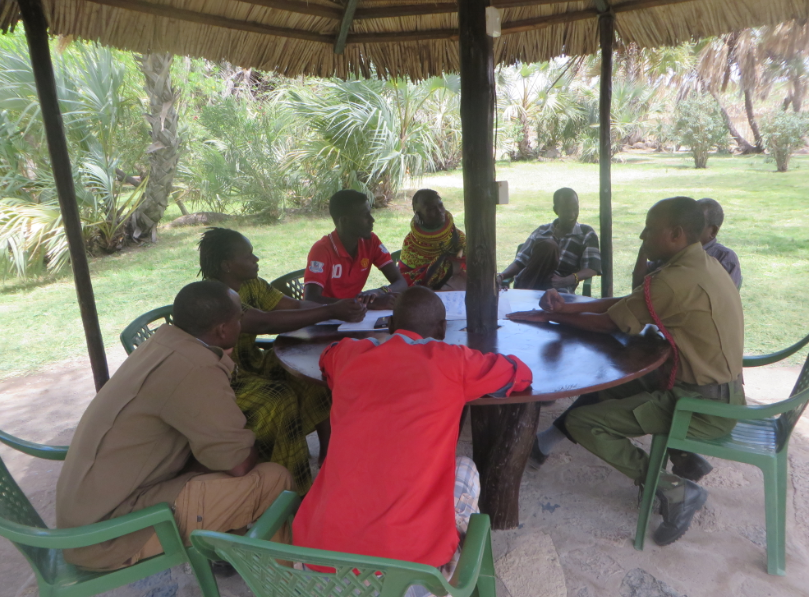

Le paysage du Mont Kulal se compose de huit villages différents répartis autour de la biosphère et dépendant des écosystèmes partagés et de la riche biodiversité du paysage. Cette situation entraîne une concurrence pour les ressources partagées et des conflits. Le projet a travaillé avec l'administration et les dirigeants locaux pour relancer les comités de paix au sein des communautés et les relier entre eux à travers le paysage pour créer un comité de paix intercommunautaire qui peut se réunir périodiquement pour planifier la gestion durable des pâturages et des ressources en eau partagés, résoudre les conflits et fournir un leadership dans la gouvernance des ressources afin de réduire et de prévenir la dégradation des écosystèmes locaux et de la biodiversité. Cette structure a permis d'organiser des réunions de paix au cours desquelles les communautés ont discuté ouvertement de leurs griefs, des défis à relever et de la manière d'aborder les questions relatives à la gestion durable des pâturages.
- La volonté des anciens des différentes communautés rivales de s'asseoir ensemble et de planifier une gestion durable des pâturages et des autres ressources, ainsi que de résoudre les conflits.
- Disponibilité des ressources, y compris des fonds, pour organiser des réunions et des événements intercommunautaires conjoints.
- La volonté de l'administration et des dirigeants locaux de soutenir les processus et de reconnaître les comités de paix intercommunautaires comme des structures valables de gestion des ressources.
- La bonne volonté et le soutien du gouvernement du comté à l'égard du processus.
Bien que les comités de paix intercommunautaires et les accords de gestion des ressources partagées restent faibles en raison des rivalités communautaires traditionnelles, les structures fonctionnent efficacement lorsqu'elles bénéficient d'un soutien et d'un bon leadership local. Ces structures constituent une base solide à partir de laquelle de bons processus et structures de gestion du paysage peuvent être développés pour une gestion durable et viable de l'écosystème.